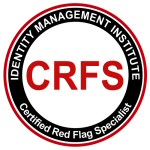Trusting Others

We often find ourselves in situations where we are trusting others and sharing some of our most private information like pass codes, house keys, photo identification cards, and car keys. As we attempt to protect our identities from theft and abuse, we must look at these personal or professional relationships where trust must exist initially and thereafter throughout the entire relationship cycle. The trust level is often lower when we first engage with other but rises over time as the relationship grows.
Trusting others may be voluntary or an obligation, may exist in varying degrees, and, can pose various levels of risks depending on the relationships. You probably give your keys to the valet parking from time to time, or you may leave you car at the garage for repairs often for days. Although there are risk components of these actions that we can control such as not leaving any private documents or house keys in the car when we drop it off for repairs, other times we just have to knowingly trust others. For example, when we give our IT staff or contractors administrative access to maintain our systems or share our pass codes to allow web designers to make changes to our websites, we are not blindly trusting them but rather out of no other alternatives, we are accepting the risk and trusting others.
Sure we can do certain things to manage the risk a little better like monitoring their activities and changing the pass codes before and after a contract is completed, but there is still that small window of opportunity where trusting others can cause some damage but, we wouldn't share our privacy if we didn't accept a calculated risk or trusted them just enough to jump into the relationship in the first place, right? The consequences of damage caused by others we have to trust can be huge and devastating to varying degrees. For example, the risk of a mechanic who may duplicate our house keys left in the car we dropped off for repairs is less than the risk of a web designer who has access to our business websites and social media accounts like Facebook and Twitter. This increased risk is because the damage can be instantaneous and bring the business to a halt at least for days.
The next questions is how do we trust others and to what extent since we can not fully trust when we enter into a relationship with them? By asking questions, checkering references, researching online, and then using our internal guiding system called intuition or gut feeling to determine that initial trust level necessary to engage and start building trustworthy relationships. This is one of those risks than can never be completely eliminated and as we do our initial trust due diligence to engage others into our daily lives, we also hope for the best outcome as we observe the relationship grow, the trust level increase, and the risks decrease.
Read another article about the risks of trusting others like valet parking.








